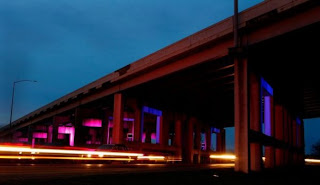 A recent Dutch study has concluded that people living within one kilometer of green space had improved health in 15 out of 24 conditions, even after researchers adjusted for other health factors. Respiratory and depression/anxiety disorders were particularly affected, suggesting that the physical factor of cleaner air and the emotional benefit of being near nature both contributed. The study looked at people within a 3 kilometer radius of parks, and the benefit was greatest for those withing 1 kilometer, which makes sense to me, because the thing I prize most about my neighborhood is that I'm only three blocks from Overton Park. However, anxiety symptoms, infectious diseases of the digestive system and medically unexplained symptoms were relieved even with green spaces that were farther from the home.
A recent Dutch study has concluded that people living within one kilometer of green space had improved health in 15 out of 24 conditions, even after researchers adjusted for other health factors. Respiratory and depression/anxiety disorders were particularly affected, suggesting that the physical factor of cleaner air and the emotional benefit of being near nature both contributed. The study looked at people within a 3 kilometer radius of parks, and the benefit was greatest for those withing 1 kilometer, which makes sense to me, because the thing I prize most about my neighborhood is that I'm only three blocks from Overton Park. However, anxiety symptoms, infectious diseases of the digestive system and medically unexplained symptoms were relieved even with green spaces that were farther from the home.The healthy influence was greatest for children and least for the elderly, who as a group do not get out of their homes as easily as other demographics. Children were 21% less likely to suffer from depression if they lived near green areas.
Dr Jolanda Maas of the VU University Medical Centre in Amsterdam, said: "It clearly shows that green spaces are not just a luxury but they relate directly to diseases and the way people feel in their living environments. Most of the diseases which are related to green spaces are diseases which are highly prevalent and costly to treat so policy makers need to realize that this is something they may be able to diminish with green spaces."
Memphis, near the bottom of the nation for city land devoted to parks, needs to treasure and maintain the parkland we have while looking for opportunities to expand it. I would also argue that we need to stop using the green spaces we do have as overflow parking lots, a sporadic problem at several parks and an ongoing problem in Overton Park with zoo parking on the one big meadow every nice weekend. Brian Carter from the zoo told Park Friends last night that the zoo is diligently seeking a solution that will replace the system of depriving Overton Park of its peaceful meadow during every beautiful weekend day of the year (and a good many other days besides). I hope they can come up with this solution quickly. This situation has gone on too long already and is only getting worse as the zoo's popularity builds.
Read more about this study here and here.









